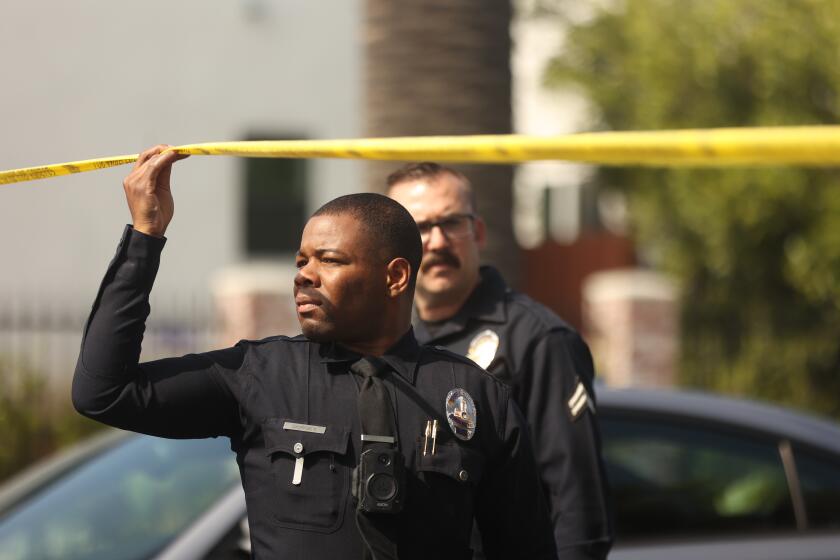Most County Beaches Get A’s and Bs
- Share via
Water quality at most Southern California beaches improved slightly this summer, with 84% receiving very good to excellent marks. Still, a handful of popular beaches were so consistently polluted that they were deemed “beach bummers” by Heal the Bay, which released its third annual summer beach report card Thursday.
In Ventura County, most of the 54 beaches included on Heal the Bay’s list scored high marks, with 85% receiving A’s, 9% Bs and only 6% Fs.
But the three coastal areas that failed--Rincon Beach, Hobie Beach and “Kiddie Beach”--are a serious concern that must be addressed, said Lee Quaintance, director of the Beacon Foundation, a watchdog group.
“We have a very severe, chronic problem that is depriving families with young children a safe place to swim,” he said. “It’s deplorable to get an F.”
Improvement was most marked in Los Angeles County, where 81% of beaches received good to excellent ratings, compared with 68% last year.
“It’s good to finally see water quality move in the right direction, but it demonstrates that we still have a long way to go with a lot of beaches,” said Mark Gold, executive director of Heal the Bay, a Santa Monica-based water-quality group.
Orange County, where 80% of the beaches were rated good or excellent, saw a very slight dip in water quality this summer, and had the most beach closures caused by sewage spills. Stretches of shoreline were closed 20 times by sewer spills that released 29,475 gallons of sewage into the ocean.
Using weekly health-monitoring data provided by county agencies, Heal the Bay grades beaches from A through F based on the risk of ocean swimmers becoming ill. The report, which covers May through mid-October, is an analysis of data from 365 monitoring stations from Santa Barbara County to the Mexican border.
Gold cautioned that the seemingly positive findings were based on dry summer months. Pollution is typically much worse in the winter, when heavy rains send so much runoff pollution into the ocean that a plume stretching to Catalina Island, 26 miles away, can be created.
But even during the summer, popular coastal stretches--including parts of Doheny State Beach in Dana Point and Surfrider Beach in Malibu--failed state health standards so regularly that they received Fs.
Gold said the biggest pollution problem in the summer at some beaches is poor tidal circulation--typically at sheltered beaches such as Dana Point’s Baby Beach--and urban runoff, the toxic mixture of oil, pet waste and other pollutants washed off streets and lawns into storm drains and eventually the ocean.
Poor circulation is the principal problem with Ventura County’s Kiddie Beach--officially known as Channel Islands Beach Park--which topped Heal the Bay’s list of “beach bummers” last year. A county-commissioned study this year found that pollution at the popular swimming area probably comes from excessive bird droppings and is exacerbated by the lack of a current.
A task force is working on solutions that could be funded with a $1.5-million state grant.
“I wish we could move a little faster in correcting the problem,” said Ventura County Supervisor John K. Flynn. “This is a bigger societal problem throughout California, and instead of pointing fingers, we’ve got to solve it.”
The percentage of beaches in the report’s good to excellent range--Bs and A’s--increased from 80% in 2000 to 84% this year, the report said. That improvement, Gold said, was the result of two factors--human efforts to divert urban runoff from reaching the ocean and natural variations in water quality from one year to the next.
Diversions connect storm drains to the sewer system, so that during dry weather, runoff is routed to a sewage-treatment plant instead of the ocean.
“Over the years, there have been several storm drains that had diversion systems put on,” said Richard Kebabjian, chief of the recreational health program in the Los Angeles County Department of Health Services. “This helps an awful lot.”
He added that increased public-awareness efforts by environmental groups and county agencies have also decreased the amount of polluted runoff being sent to the ocean.
Santa Barbara County remained a trouble spot in Southern California, with only 65% of its beaches receiving A’s and Bs. Attempts to reach officials there were unsuccessful.
Heal the Bay’s report is available on its Web site: https://https://www.healthebay.org. Starting today, the group will expand its weekly online beach report card to include all of California’s popular beaches.
More to Read
Sign up for Essential California
The most important California stories and recommendations in your inbox every morning.
You may occasionally receive promotional content from the Los Angeles Times.














